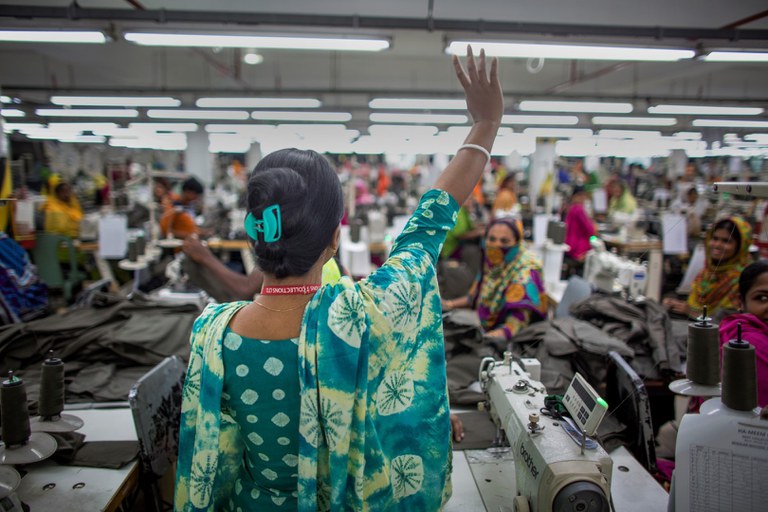Discover the Women’s Leadership and Gender Equality in the garment sector, self-directed training modules
The ILO’s Women’s Leadership and Gender Equality in the garment sector, self-directed training is aimed at manufacturers and producers, brands, worker and employer organizations, governments as well as development organizations and workers in the garment sector (women and men). It is composed of five (5) self-directed modules which are available in Bahasa, Burmese, Khmer and Vietnamese. Each learning module will take about 90 minutes to complete.
Module 1 : Women and the World of Work
In this module you will learn about the challenges women face in the global workforce specifically in the garment sector in your region. You will also gain a better understanding of why it is important to promote women's leadership in social dialogue.
By the end of this module you will be able to:
- Identify the key challenges faced by women in the world of work at global level;
- Illustrate different concepts around "leadership" and how they relate women;
- Apply all the concepts above to your own professional context.
Module 2: What is discrimination?
This module takes a close look to the concepts of discrimination and equality of opportunity in the world of work, as defined by ILO Convention No. 111 (Employment and Occupation), 1958.
By the end of this module, you will be able to:
- Understand what is discrimination in employment and occupation according to ILO Convention No. 111, and what is not
- Identify the different forms (direct, indirect, systemic) of discrimination
- Review the grounds and causes of discrimination, particularly from a gender equality and inter-sectional perspective
- Identify when discrimination can happen at the various stages of the employment cycle
- Review possible ways to address discrimination and inequalities
- Analyse your current context in light of these concepts
Module 3. Pay equity or pay equality?
This module introduces the concepts of pay equity as well as the gender pay gap. It investigates the causes and consequences of pay inequality, as well as the strategies to tackle the gap and achieve pay equity.
By the end of this module, you will be able to:
- Distinguish between "equal work" and "work of equal value" and frame it within the context of ILO Convention No 100;
- Elaborate human rights-based and business-case arguments towards the promotion of pay equity;
- Contextualize such concepts in the garment sector and in the Asia-Pacific Region;
- Identify strategies for action within social dialogue mechanisms.
Module 4: Care, families and the world of work
This module focuses on the concept of care work, especially unpaid care work, and analyzes its impacts on women's employment opportunities in employment, with specific attention to the garment industry.
By the end of this module, you will be able to:
- recognize the link between care work, gender and equality;
- single out regional and sector specificities and compare them with global trends and data;
- understand and illustrate the circle of unpaid care - paid work - paid care;
- outline key provisions of relevant international labour standards;
- recommend effective strategies for the garment industry.
Module 5: (Gender-based) violence and harassment
This final module will deal with a key issue of violence and harassment, affecting millions of workers across industries and occupations. Although both women and men are victims of violence and harassment in the work environment, women are disproportionately affected by the phenomenon, bringing it right at the center of the discussion on key gender equality issues standing in the way of women's leadership, especially in the context of a highly feminized sector as the garment and textiles.
By the end of the module you will be able to:
- Conceive of “violence and harassment” as a single concept and outline key related terminology;
- Appreciate the innovations and key provisions of ILO Convention No. 190;
- Better understand the phenomenon as applied to the garment sector, and from a gender perspective;
- Identify strategies to prevent and address the phenomenon in practice.

